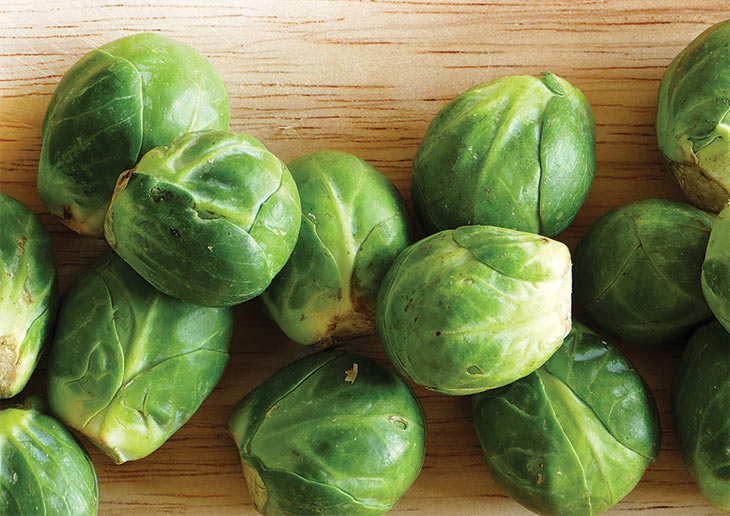
"Oh no, not again!”
Those are the words that often come out of children’s mouths as they face Brussels sprouts invading their dinner plate.
For Barbara Kelley of Kelley Plant Farms — who incidentally loves this increasingly popular vegetable and grows Brussels sprout seedlings for sale — it’s a family memory that has become a running joke.
Her late husband, Dan, was a great believer in getting their young ones to try new foods, which were sometimes not well-received.
“He’d say, ‘Put it on your plate and try it,’ and when we served Brussels sprouts, the kids hated them and for years after would never try them,” says Barbara, a longtime Texas Farm Credit customer. “I think one of my sons, Keith, might eat them today, but I’m not sure about that!”
Love ’Em or Hate ’Em?
The difference that can make or break a sprout believer is in the cooking time. Whether you boil, steam, sauté or roast, overcooking can bring out the sprouts’ sulphuric compounds that some find too bitter.
The secret is to cook the sprouts until they are barely fork-tender. Try them steamed and tossed with butter, salt and pepper, or roasted with olive oil and finished with balsamic syrup as in the recipe below.
Growing Brussels Sprouts
Some may be surprised that the cool-weather Brussels sprouts are grown in Texas and other southerly states. Though best grown in hardiness zones 4-7, they can be grown as a winter vegetable in zone 8, an area that includes the far Northeast Texas city of Bogata, home of Kelley Plant Farms.
To grow your own, keep in mind that temperatures should be between 45 and 75 degrees Fahrenheit, and between 59 and 64 degrees for higher yields. Plant seeds indoors four weeks before the last frost date, then plant seedlings in spring for fall harvest. The plant has a tall, thick stalk, and the sprouts grow just underneath leaf stems, where the stem meets the stalk. Harvest sprouts starting from the bottom of the stem when they reach 1 to 2 inches in diameter.
Roasted Balsamic Brussels Sprouts
1½ pounds Brussels sprouts
¼ cup olive oil
Salt and pepper
2-3 tablespoons balsamic syrup
Preheat oven to 375 degrees F.
Cut sprouts in half lengthwise. Put into a bowl and toss with olive oil, salt and pepper. Arrange on baking sheet. Roast until browned, about 20 to 25 minutes.
Drizzle balsamic syrup over the sprouts, toss and serve!
About the Sprout
Brussels sprouts are so named because they are believed to have been developed in Brussels, Belgium, in the 14th century and even earlier, by some accounts. They were popularized in the United States by Thomas Jefferson, who introduced them in the early 1800s.
Botanically, the “fairy cabbage” — a fanciful term heard in the British Isles — belongs to the same Brassica family of cruciferous vegetables that includes collard greens, broccoli, kale and cabbage.
Sprouts and Your Health
Brussels sprouts are exceptionally rich in protein, vitamins, minerals, dietary fiber and antioxidants. They are high in vitamins C and K, with more moderate amounts of B vitamins, including vitamin B6 and folic acid.
In addition, like broccoli and other members of the Brassica family, sprouts contain sulforaphane, a phytochemical being researched for its potential anticancer properties.
So be kind to yourself — do as so many others are doing today and give this tiny vegetable a try. It’s mighty good, and good for you, too.
– Staff